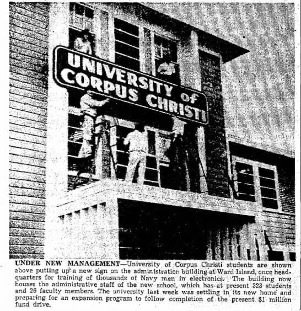The Round Building
by Julieta R. Chapman
The Round Building at Texas A&M University-Corpus Christi: History, Transformation, and Symbolism
Introduction
This initiative aims to deliver information solely regarding the Student Services Center, commonly referred to as the "Round Building," situated at the island university on the Texas Gulf Coast. The groundbreaking ceremony for the Round Building took place in 1963, and the building commenced operations that same year, becoming a notable landmark on the Island Campus. Initially, the Round Building was designed specifically to serve as the new library for the university, which was then known as the University of Corpus Christi (UCC). (Corpus Christi Caller, 1963; TAMU-CC Library Exhibits).
Construction and Original Purpose
The UCC Library was inaugurated on May 8, 1963, functioning as the primary library for the expanding institution. Constructed in a polygonal round shape, the building housed book stacks, reading zones, and small program areas. The total expenditure was around $300,000, marking a significant architectural enhancement to South Texas (Corpus Christi Caller, 1963).
Architecture and Notable Features
The design of the Round Building, which approximates a circle with its decagonal shape, embodies the architectural trends of the mid-20th century that prioritized natural light and sweeping views. The extensive use of glazing and the circular arrangement of the interiors created a unique educational atmosphere, establishing it as a prominent landmark on campus (KRIS Coastal Bend History; TAMU-CC Library Exhibits).
Its distinctive circular architecture, along with its historical importance and adaptability, positions it as a symbolic structure that represents both resilience and transformation within the campus community (Corpus Christi Caller, 1963; TAMU-CC Library Exhibits).

